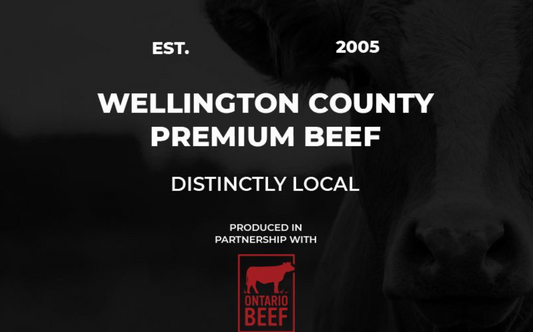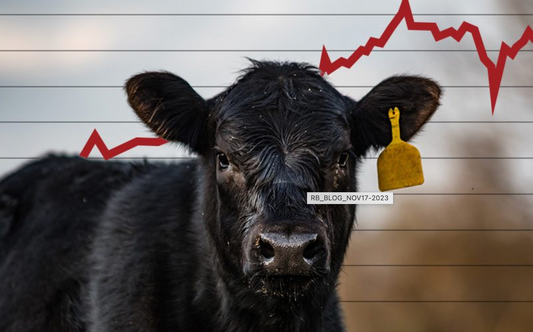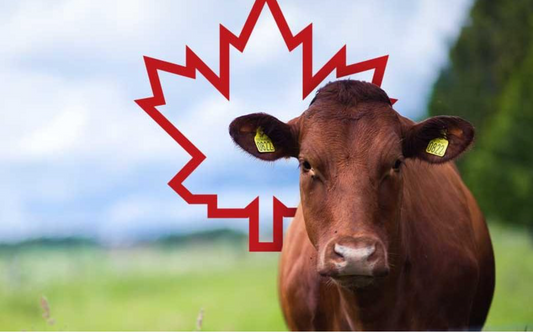The cattle industry is in constant flux, influenced by a myriad of factors that range from weather conditions to consumer demand. At Rowe Beef, we believe in keeping the public informed about the latest developments in the industry. In this blog post, we’ll delve into the state of the cattle market as of the third quarter of 2023, covering fed cattle, feeder cattle, and non-fed cattle, offering insights that help you better understand the dynamics at play.
Fed Cattle Market
The summer of 2023 has brought some surprises to the fed cattle market, surpassing expectations. The third quarter saw moderate fluctuations but remained resilient. Prices have been holding steady between $231/cwt and $233/cwt, with the third week of September posting an average of $232.87/cwt for fed steers. Notably, this figure represents a remarkable $50.93/cwt increase compared to the same week in 2022.
While prices in Canada remain strong, there’s an unusual widening of the fed cattle basis due to local markets trading further back from U.S. markets than expected. The cash-to-cash fed basis in the third week of September was -$15.95/cwt.
Lower cost of gain has led to longer-fed, heavier market cattle, contributing to the seasonal increase in fed cattle carcass weights. In mid-September, the average fed steer carcass weight reached 938 lbs., marking a 24 lbs. increase from mid-August but still 11 lbs. smaller than the same period in 2022. Cattle-on-feed numbers in Alberta and Saskatchewan have exceeded year-ago levels, with a total of 826,316 head on feed as of September 1, driven in part by larger placements in August.
The increase in placements, particularly due to drought-forced early fall run cattle, has had ripple effects. The scarcity of feed and yearlings has resulted in exposed heifers being redirected into feedlots and onto feed. Fed cattle slaughter numbers have been on the rise, although the cumulative numbers for 2023 still lag behind those of the previous year. Fed steer slaughter as of mid-September was eight percent lower than in 2022, while fed heifer kill was down by five percent. Fed cattle exports to the U.S. also declined by four percent in the first week of September.
Feeder Cattle Market
The feeder cattle market has seen early movement due to drought conditions. Auction numbers have surged, with internet sales, both current and forward delivery, increasing by over 47 percent in 2023. The Alberta market witnessed a significant influx of forward-sold calves in recent weeks, met with aggressive buying and record-high prices. For instance, 550-lb. feeder steers averaged $401.79/cwt in the third week of September, marking an impressive $129.18/cwt improvement over the same week in 2022.
The yearling run has slowed, and heavier classes of feeder cattle have remained stable. The 850-lb. steer average in the third week of September was $328.84/cwt, an increase of $90.34/cwt or 38 percent compared to the same period in 2022. The feeder basis was almost $10/cwt wider than the previous year, but it showed an improvement of $8.57/cwt in just two weeks.
Feeder cattle exports to the start of September are 30 percent lower than year-ago volumes, standing at 113,562 head. Data up to the end of July indicates year-to-date imports at 162,000 head, reinforcing Canada’s status as a net importer of feeder cattle in 2023.
Non-fed Cattle Market
The cull cattle market has faced pressure as deteriorating pasture conditions led to increased cow availability throughout the summer. The Alberta D2 cow price dipped below the U.S. canner cow market, with an average of $135.10/cwt in the third week of September. This marked a 14 percent decline from earlier in the summer. Although cow prices have trended lower compared to the previous year, the average D2 cow price remains $33.51/cwt stronger.
Slaughter bull prices have also trended downward, with an average of $155.07/cwt in the third week of September. Non-fed slaughter numbers have increased week-over-week, with cow slaughter in Canada up by seven percent as of mid-September, totaling 341,093 head. Bull slaughter increased by a substantial 26 percent to 13,156 head. Despite reduced total inventory numbers, total cow marketings in 2023 are expected to be larger.
Looking Ahead
As we head into the final quarter of 2023, the cattle market is poised for further changes. The summer-fed cattle supply is expected to slow, and cattle lift times will shorten. Increased demand for holiday needs and middle meats should push fed cattle prices higher. For feeder cattle, strong prices are expected through the fall run, although seasonal pressure may soften prices as volumes increase through October.
Non-fed cattle, on the other hand, may continue to face softening as additional cows and bulls are marketed, driven by the lack of winter forage in many areas. However, as fall run volumes slow and fed cattle prices improve, the non-fed market should also start to rebound. It’s worth noting that holding onto cull cows into the new year may be a wise strategy, as prices historically trend higher in the first quarter.
In conclusion, the cattle market remains dynamic, influenced by various factors. At Rowe Beef, we will continue to monitor these trends closely and provide you with timely updates to keep you informed about the ever-changing landscape of the cattle industry. Stay tuned for more insights and information to help you navigate the world of beef production and consumption.



